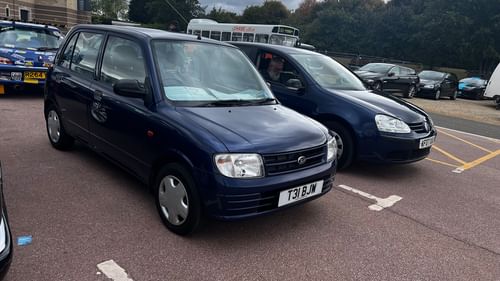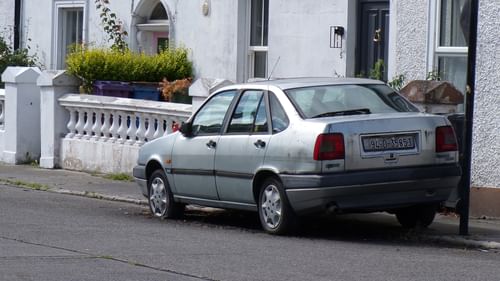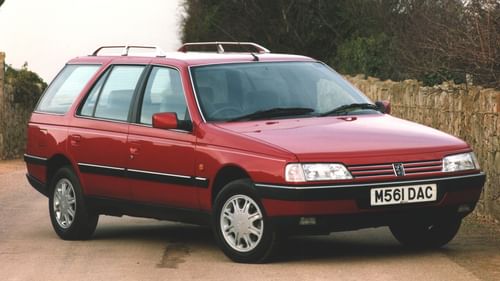
Italy has a cultural heritage that is older than Dante and da Vinci, yet as a country it’s one of the younger ones in Europe, with unification only beginning in 1860 to bring together around seven previously-warring city-states. This Fiat Punto, which was built in 2011 to celebrate the 150th anniversary of that fact, has been to virtually all of them throughout its truly gruelling 300,000-kilometre life.
As a white Punto, it’s as anonymous on Italian city streets as a crumb of Parmesan cheese on a steaming mound of spaghetti alla Bolognese (which should more correctly be called spaghetti al ragù).
Yet it wears its discreet ‘Italia 150’ badges with pride, as befits a vehicle that is no ordinary 1.2-litre Fiat Punto Evo. At a mileage when most similar Puntos would have raised the white flag, this shining white example just wants more.
As well as bearing its scars of urban battle with pride (in Italian cities, driving is definitely a contact sport), this Punto has munched motorway miles not only in its homeland, but as far afield as France, Switzerland, Germany, Spain, Britain, and even Serbia.
Throughout that time, it’s exhibited the sort of reliability that’s more closely associated with Munich rather than Milan, putting an end to the cruel ‘Fix It Again Tony’ jibes often aimed at its much-maligned maker.
As an Evo, this could be considered the ultimate iteration of the Grande Punto, which was produced until August 2018, with 2.6 million examples made, not to mention the Super 2000 rally car that our plain white Punto, with its liberal coating of mud and dings, bears a passing resemblance to. If you squint very hard and are blessed with a Pavlovian reaction to the word ‘Evo’.
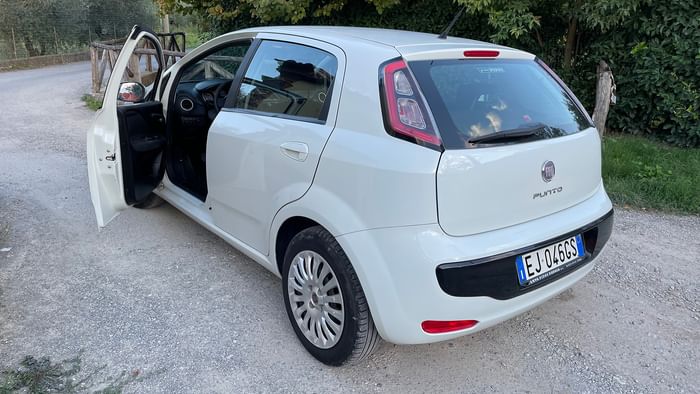
Make no mistake, though: this car has been driven every bit as hard as those competition specials, for reasons that we’ll go into more detail later, with every one of the 69 horses called upon to give their best over the roads of Tuscany, where it mainly lives these days. Part airport hack, part people carrier, part company car, and part light haulage van, this Punto has been called upon to cover a number of roles. And it’s accomplished them all with the ease of Pavarotti hitting a high note.
It’s less sonorous than the Modena maestro, true, but it can swallow almost as much. Not everything is entirely perfect: the front right-hand door fails to lock, the parcel shelf regularly falls into the boot, the front bumper seems to want to part company with the rest of the car, the flattened driver’s seat looks like Pavarotti himself was the principal occupant, and the steering wheel appears to have been chewed at by rats, although the rest of the interior is surprisingly OK (as long as you discount the dubious stain on the back seat which is still awaiting examination by a forensic pathologist).
Apart from that, this Fiat is remarkably solid and the perfect vehicle with which to embrace the joy of Italian motoring.
The engine (the same unit found in various modern 500s) isn’t exactly quick, but it’s willing all the way up to the redline, which is an excursion taken on every trip. However, due to the wider track, longer wheelbase, and inherent balance of the Punto chassis – remember, this model was once used for rallying – it’s a lot more rewarding to drive than its little brother, helped by a few subtle modifications on this particular example.
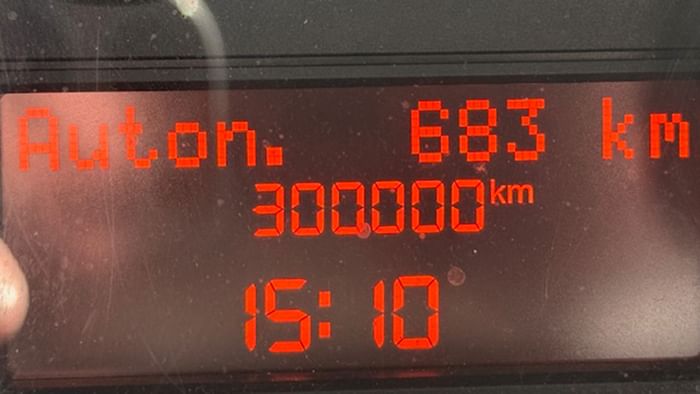
It was acquired five years ago, having already completed 96,000 of those kilometres: firstly with a local firm based near the Tuscan town of Pescia, and secondly with an older Serbian gentleman living in Italy, who regularly took it back to his homeland.
Despite these lengthy foreign sojourns, the Punto lived a relatively charmed life before coming into its present ownership. And that’s when it slipped from the clutches of the retirement home into the front line. It’s honoured its rally legacy with several trips to the Monte-Carlo Rally, but more excitingly, it’s actually been a recce car on several Italian championship rallies, covering the exact route to prepare the pace notes: through snow, mud, gravel and asphalt.
To help do that job better, it’s been equipped with Brembo brakes at the front (which are probably worth more than the rest of the car) and has been subtly lowered all-round.
In between its secret life as a rally support act, it’s delivered classic car parts, served as a learner car, and ferried seven people around on more than one occasion (don’t try this at home, but you can quite easily fit six in the car, and one in the boot). Who needs an Espace when you have a Punto?

In Italy, the equivalent of an MOT is the revisione, which has the added bonus of being valid for two years. The Punto recently emerged victorious from its inspection, requiring only a bit of work on the exhaust and a new wheel bearing to ensure a clean bill of health for the next couple of years.
Next up for our intrepid Punto will be a trip to the UK to deliver some furniture, before returning to Italy with some bits from a classic Fiat 500 that will shortly be restored. Poland is also earmarked for a trip before the end of the year, which is Fiat’s second spiritual home after Italy.
Is the Punto a modern classic? Of course it is, thanks to its Pininfarina-designed lines and its status as an icon of Italian transport. While still plentiful, their numbers are beginning to get fewer, and within a few years it’s almost certain that they will all go the same way as the Fiat Uno: once ubiquitous but now a rarity (I had a go in a Fiat Uno turbodiesel recently, but that’s another story for another day once my fillings have re-established themselves in my sockets).
Except the Punto is much more of a looker than the Uno ever was, and when cleaned, that brilliant bianco bossa nova paintwork still shines just as brightly as it did 14 years ago. Fiat actually made a quality product with this one. It starts first time, every time, and will be around in our household until it dies – as there’s simply no other car that combines rock-bottom running costs with Italian style and Teutonic dependability.

